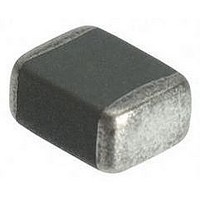B59701A100A62 EPCOS Inc, B59701A100A62 Datasheet - Page 21

B59701A100A62
Manufacturer Part Number
B59701A100A62
Description
Thermistors - PTC 100C 0805
Manufacturer
EPCOS Inc
Type
PTCr
Datasheet
1.B59601A0075A062.pdf
(26 pages)
Specifications of B59701A100A62
Resistance
< 1 KOhms
Termination Style
SMD/SMT
Package / Case
0805
Thermistor Type
PTC
Operating Temperature Range
-40°C To +100°C
Operating Voltage Range
32VDC
Thermistor Case Style
0805
No. Of Pins
2
Rohs Compliant
Yes
Lead Free Status / RoHS Status
Lead free / RoHS Compliant
Other names
B59701A0100A062
Available stocks
Company
Part Number
Manufacturer
Quantity
Price
Company:
Part Number:
B59701A100A62
Manufacturer:
MICRON
Quantity:
401
When subjecting leads to mechanical stress, the following should be observed:
Tensile stress on leads
During mounting and operation tensile forces on the leads are to be avoided.
Bending of leads
Bending of the leads directly on the thermistor body is not permissible.
A lead may be bent at a minimum distance of twice the wire's diameter +2 mm from the solder
joint on the thermistor body. During bending the wire must be mechanically relieved at its outlet.
The bending radius should be at least 0.75 mm.
Twisting of leads
The twisting (torsion) by 180 of a lead bent by 90 is permissible at 6 mm from the bottom of the
thermistor body.
6
When thermistors are sealed or potted, there must be no mechanical stress through differing ther-
mal expansion in the curing process and during later operation. In the curing process the upper
category temperature of the thermistor must not be exceeded. It is also necessary to ensure that
the potting compound is chemically inert.
Sealing and potting compounds may degenerate the titanate ceramic of PTC thermistors and lead
to the formation of low-ohmic conduction bridges. In conjunction with a change in dissipation con-
ditions due to the potting compound, local overheating may finally damage the thermistor.
Therefore sealing and potting should be avoided whenever possible.
7
You may use common cleaners based on organic solvents (eg dowanol or alcohol) to clean ce-
ramic and solder joints.
For sufficient cleaning flux must be completely removed.
Solvents may cause plastic encapsulations to swell or detach. So be sure to check the suitability
of a solvent before using it.
Caution is required with ultrasonic processes. If the sound power is too high, for example, it can
degrade the adhesive strength of the terminal metallization or couse the encapsulation to detach.
After cleaning drying is promptly necessary.
Please read Cautions and warnings and
Important notes at the end of this document.
Sensors
Limit temperature sensors, EIA sizes 0603 and 0805
Sealing and potting
Cleaning
Page 21 of 26
Standard series













